What to consider when choosing a dehydrator
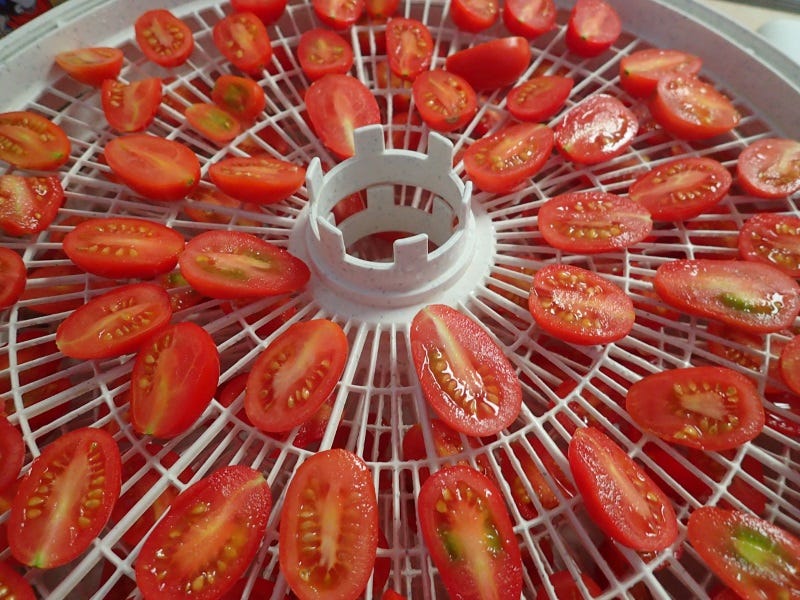
 Dehydrate your own tomatoes for a delicious ingredient to recipes
Dehydrate your own tomatoes for a delicious ingredient to recipesLong before pressure canners or even freezers came along, dehydrating was the best means of food preservation. As long as you can remove enough of the moisture from foods, which inhibits the growth of the microorganisms and enzymes that lead to spoilage, dried food easily lasts for months.
Dehydrating foods also saves space, which is a precious commodity by the end of the harvest and hunting season. I’ve found a pound of ground beef dehydrates to roughly four ounces (or a good handful) of meat. I can easily store the equivalent of three-to four pounds of ground meat in a quart jar.
It’s also very convenient. Dried berries of all flavors can be tossed into oatmeal or desserts, entire meals can be created within minutes with boiling water, and it’s easy to have enough vegetables for the day with a handful of dried peppers or kale.
The critical tool you need to create a myriad of dehydrated foods is a dehydrator. But the trick is deciding what style and function works best for your needs. And that isn’t always easy: here are several differences between models. A couple of the basic requirements include a heating unit and fan (which most have), but beyond that, pick the features that works best for the foods you prefer.
Why choose a dehydrator instead of using the oven
While some people use their oven to dehydrate food, it’s not the best method because it is often too hot to retain nutrients in dried food. The quality of the end product is also degraded if it is too crisp. You simply want to pull the moisture from the food, not cook it.
If your oven maintains 150 degrees F., which isn’t most ovens anymore since even the warming temperature is around 170 degrees F., you can use it to dry food. But for most people using a dehydrator is the best option for consistent results.
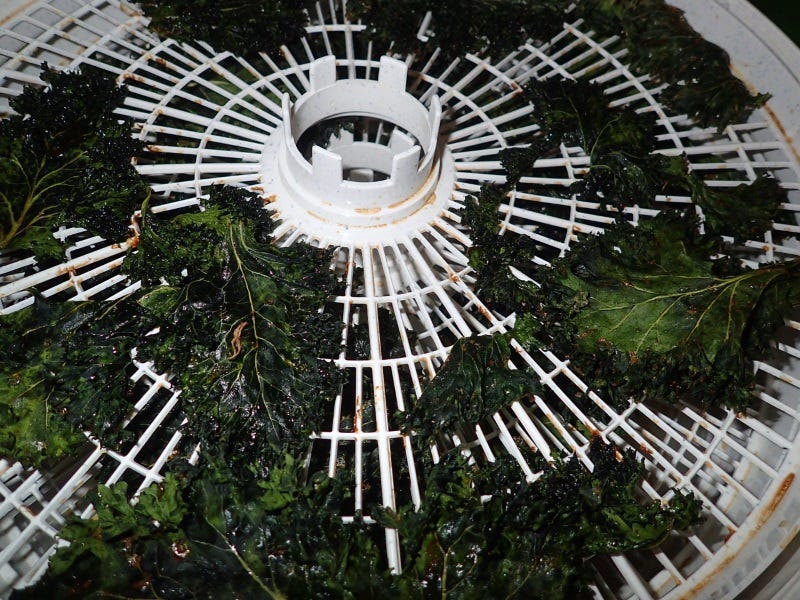
Which dehydrator is best? And do I need stacked trays?
Dehydrator models offer either stacked trays or trays that slide in like shelves. There are pros and cons to each option making it a matter of personal preference.
The benefit of dehydrators with stacking trays is they handle small batches easily. With a minimum of four trays, it doesn’t have to be big production to dry a few pounds of burger or a batch of fruit.
On the flip side, if you have a large garden or dry a lot at one time, stacked units may add well over a dozen trays to the unit, greatly increasing the capacity of the unit. The trays stack snugly upon each other with central core channel, which provides even airflow from the heater and fan situated either on the top or bottom throughout the entire unit. They are also easy to clean no matter how many you use. Just put them in the sink to wash them.
The greatest drawback of stacking trays is sometimes the trays that are the farthest away from the fan and heat source take longer to dry. That means you’ll want to rotate them, and will have to unstack them to do so. While it’s not an issue as much with four trays, if you have ten or more, it takes extra time to ensure there is an even flow of warm air to all of the food.
Nesco is a popular brand featuring stacking trays. I’ve used the round Nesco Snack Master ($60) for years, and appreciate its efficiency and ease of cleaning. While most of the time, I stick with the standard four trays, it can expand to 12 trays for extra-large batches of apples or dried tomatoes. For those who wish to dry even larger amounts of food, the Nesco Gardenmaster Pro ($120) handles up to 30 trays.
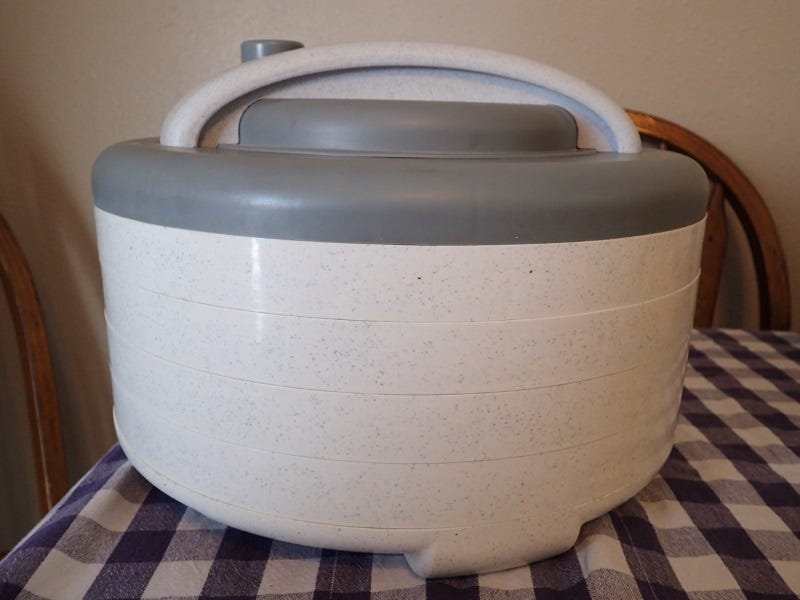
Do slide-in shelves make more sense?
The other style of dehydrator has the heat source and fan in the back of the unit, which blows the warm air evenly over the trays that slide into the unit like shelves. That means they don’t need to be rotated like the stacking units. They are also easy to check, since you can slide out specific trays without disrupting the entire process. This is particularly handy when drying different foods, which require varying drying times.
The shelf units also offer latitude to leave out a shelf to accommodate larger or bulkier foods. Some people even use them to make batches of yogurt, since you can place jars of the cultured milk on the shelves.
But unlike the stackable trays, the shelf dehydrators can’t adjust their size according to your needs. If you only use four trays, the remaining ones will be empty, and if you need more than the typical 9-10 trays in many units, you’re out of luck. You’ll have to split your batches or buy another dehydrator.
Excalibur and LEM are two of the more popular options in shelf dehydrator types, and you truly can’t go wrong with either unit. The greatest difference is a countertop unit, such as the Excalibur 3900B ($237), which has nine trays. The LEM-10 ($180) has 10, allowing you greater space and drying capacity.
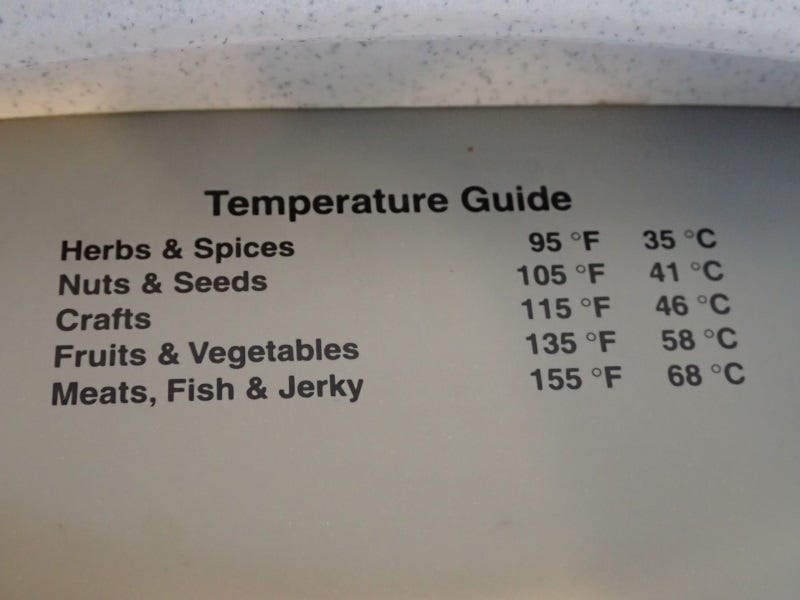
The importance of temperature control
Most people use their dehydrators for more than one type of food, which is why it’s important to have a range of temperatures on your particular unit.
Excalibur dehydrators range from 95-160 degrees F., allowing you to experiment with optimum temperatures for anything you might dry. Many others start at 115 degrees F. and go up to 155 degrees, which is perfectly acceptable for most foods, including meats. It’s just not quite as versatile.
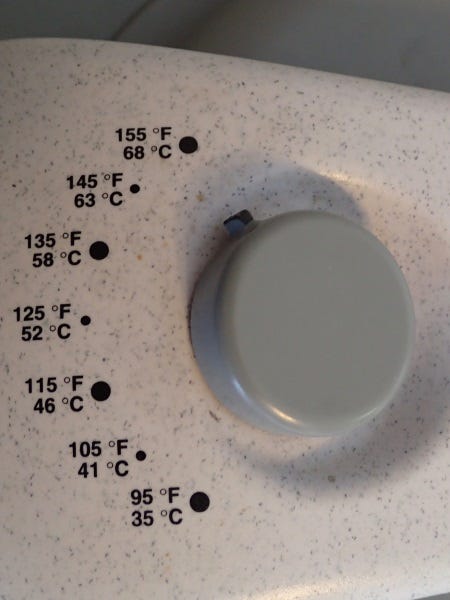
Are timers necessary?
If you’re home all day, a timer isn’t a critical component on a dehydrator, but if you have batches of fast-drying foods, such as herbs that lose quality if dried too long, or you are gone frequently, a timer is particularly valuable. Timers are also helpful for foods that dry overnight. They can automatically shut off in the morning.
While timers are a matter of personal preference, if you tend to be busy with multiple projects, having a timer on your dehydrator can prevent over-drying many foods.
Learn your dehydrator
Whatever dehydrator suits your needs, you will gain the most satisfaction when you use it regularly. Part of the enjoyment of using a dehydrator, besides the added food security for your family, is creating a high-quality end-product that can be used at home or away. Before long, you’ll connect the comforting hum of the fan to high-quality, convenient food.
